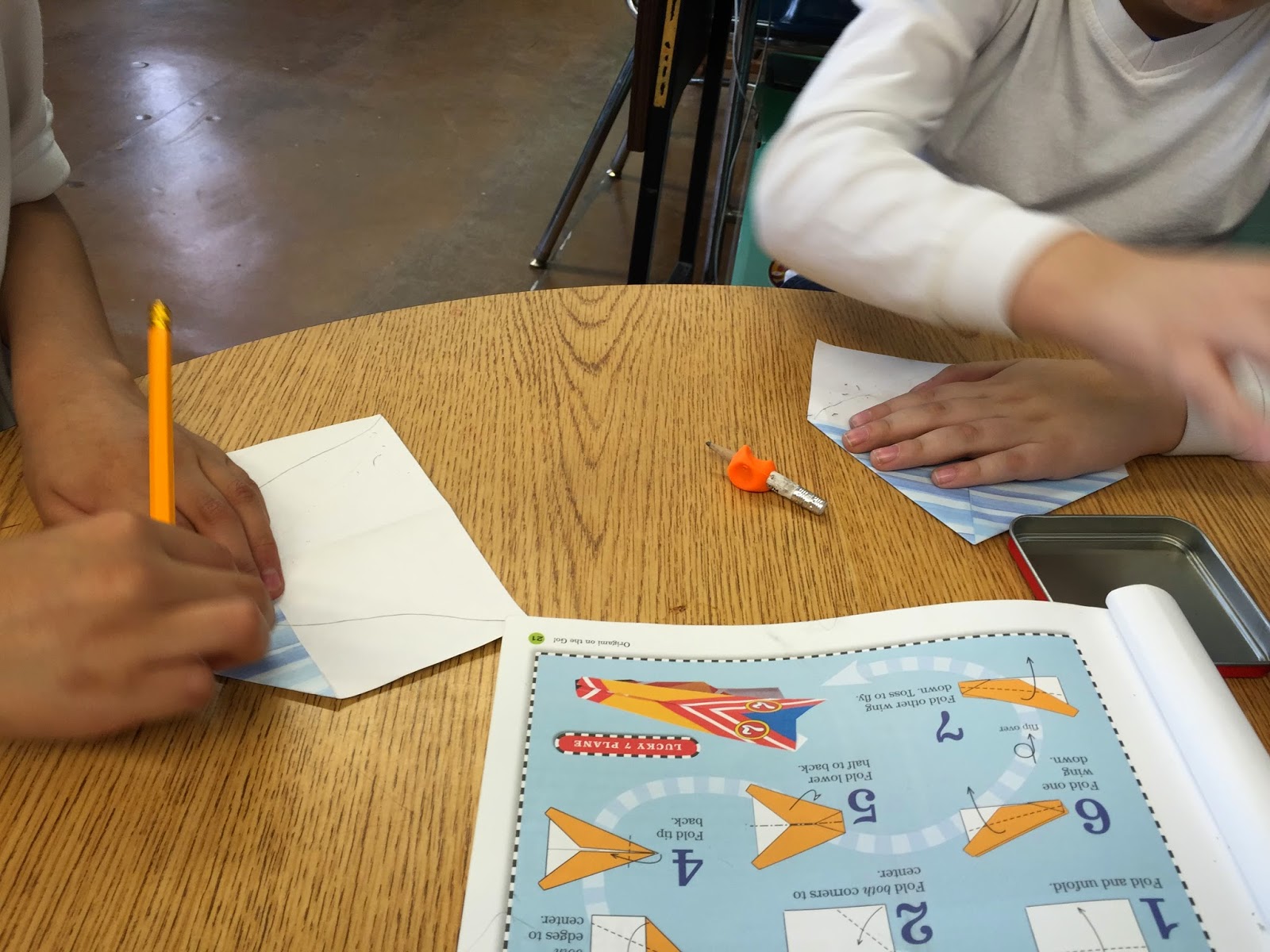I like origami because kids love the activity. Also, kids can take the origami project home at the end of the session. Kids tend to show better and longer attention span while they participate in the activity.
Here I would like to share ideas of making the activity little easier for kids.
 1. You can choose an easy or relatively difficult origami project depending on your child's level of skills and his/her age.
1. You can choose an easy or relatively difficult origami project depending on your child's level of skills and his/her age.Some projects involve many steps of folding paper and theses are relatively harder than the others.
2. You can give your child extra visual cues by demonstrating first. You show your child how to fold it first.
See if your child follow through.
If he/she follows your instructions and demonstration, that's great!! If not, here are more tips!
3. Give more visual cues on the paper. Draw a line for folding. "This yellow line is where you will fold the paper." "Make the corners pointy."
You can use shapes. "Have the shapes kiss! kiss!" "Have the shapes meet together."
(I stamped dots here. You can simply draw different shapes such as a square, circle, star, diamond, etc. It is a good chance to teach younger kids different shapes.)
4. These are my second graders. They are trying to draw lines on the paper to understand where they should fold on the paper.
I didn't give them a ruler to draw a straight line. I wanted them to understand the concept of folding paper from the 'point A' to 'point B'. You can surely give your child a ruler and see how he/she uses the ruler. Just remember, using a ruler requires fine motor skills on both hands. One hand is pressing down on the ruler. The other hand is drawing a line. Doing different task on each hand may be not too easy for some kids.
 5. Last but not least, I would like to suggest adults giving least amount of assistance to kids in the beginning. Just wait and see how kids are handling difficulty. "Do they try to solve the problem by themselves?" "Do they give up easily?" "Do they ask for help after a few times of trying it?"
5. Last but not least, I would like to suggest adults giving least amount of assistance to kids in the beginning. Just wait and see how kids are handling difficulty. "Do they try to solve the problem by themselves?" "Do they give up easily?" "Do they ask for help after a few times of trying it?"You want to learn how your child tries to solve problems and how much assistance she/he needs to do things.
Enjoy learning and teaching~!!
More resources on http://www.origami-instructions.com


No comments:
Post a Comment